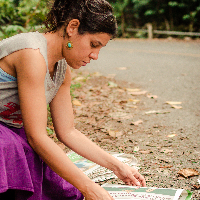Preprint
Article
Ethnobotany in Iturbide, Nuevo León: The Traditional Knowledge on Plants Used in the Semiarid Mountains of Northeastern Mexico
This version is not peer-reviewed.
Eduardo Estrada-Castillón,José Ángel Villarreal-Quintanilla,Luis Gerardo Cuéllar-Rodríguez, Martí March-Salas,Juan Antonio Encina-Domínguez,Wibke Himmeslbach,
Martí March-Salas,Juan Antonio Encina-Domínguez,Wibke Himmeslbach, María Magdalena Salinas-Rodríguez,
María Magdalena Salinas-Rodríguez, Jacqueline Guerra,Mauricio Cotera-Correa,Laura Magdalena Scott-Morales,Rebecca Jane Friesen,Patricio Garza-Zambrano,
Jacqueline Guerra,Mauricio Cotera-Correa,Laura Magdalena Scott-Morales,Rebecca Jane Friesen,Patricio Garza-Zambrano, José Ramón Arévalo-Sierra,Homero Garate-Escamilla,Maritza Gutiérrez-Gutiérrez,
José Ramón Arévalo-Sierra,Homero Garate-Escamilla,Maritza Gutiérrez-Gutiérrez, Tania Vianney Gutiérrez-Santillán *
Tania Vianney Gutiérrez-Santillán *





Eduardo Estrada-Castillón,José Ángel Villarreal-Quintanilla,Luis Gerardo Cuéllar-Rodríguez, Martí March-Salas,Juan Antonio Encina-Domínguez,Wibke Himmeslbach,
Martí March-Salas,Juan Antonio Encina-Domínguez,Wibke Himmeslbach, María Magdalena Salinas-Rodríguez,
María Magdalena Salinas-Rodríguez, Jacqueline Guerra,Mauricio Cotera-Correa,Laura Magdalena Scott-Morales,Rebecca Jane Friesen,Patricio Garza-Zambrano,
Jacqueline Guerra,Mauricio Cotera-Correa,Laura Magdalena Scott-Morales,Rebecca Jane Friesen,Patricio Garza-Zambrano, José Ramón Arévalo-Sierra,Homero Garate-Escamilla,Maritza Gutiérrez-Gutiérrez,
José Ramón Arévalo-Sierra,Homero Garate-Escamilla,Maritza Gutiérrez-Gutiérrez, Tania Vianney Gutiérrez-Santillán *
Tania Vianney Gutiérrez-Santillán *





Submitted:
24 August 2022
Posted:
24 August 2022
You are already at the latest version
A peer-reviewed article of this preprint also exists.
Abstract
Iturbide is located in the Northeast of Mexico, it has a rich native and exotic flora, however, there are no ethnobotanical records, therefore, it requires attention in the documentation of traditional practices and uses of its botanical resources. In 2021, twelve field trips were carried out, applying 110 semi-structured interviews. Plant samples were collected, identified and deposited in an herbarium. We used the Chi-square test to compare ethnobotanical uses with respect to others reported in Mexico. To determine the cultural importance, three ethnobotanical indices were applied (UVI, ICF and FL). We recorded 250 species with ethnobotanical uses associated with 121 genera and 83 families, including 140 native and 110 exotic species. The most common plant families were Asteraceae, Lamiaceae, and Fabaceae. The main uses were ornamental, medicinal and food. The species with the highest UVI values were Lepidium peruvianum, Ocimum basilicum and Rosmarinus officinale. The multifunctionality of the native and exotic flora demonstrates the extensive knowledge associated with botanical resources. Examples, the role of ornamental plants, with a direct impact on human well-being, the resilience of healers and traditional inhabitants by using different species for the treatment of various ailments. or indigenous edible plants in the daily diet.
Keywords:
Subject:
Biology and Life Sciences - Plant Sciencessupplementary.zip (8.98MB )
Copyright: This open access article is published under a Creative Commons CC BY 4.0 license, which permit the free download, distribution, and reuse, provided that the author and preprint are cited in any reuse.
Alerts
MDPI Initiatives
Important Links
© 2025 MDPI (Basel, Switzerland) unless otherwise stated




